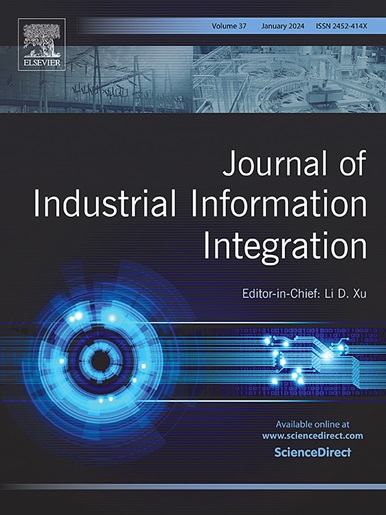通过数字孪生和滑动工作共享本体实现可互操作的人类-人工智能团队,实现建筑和制造业的自动化
IF 10.4
1区 计算机科学
Q1 COMPUTER SCIENCE, INTERDISCIPLINARY APPLICATIONS
引用次数: 0
摘要
本文介绍了一个本体系统,以支持在网络物理环境中,人类和启用人工智能的非人类代理之间的动态、可解释和以人为中心的协作。在这种情况下,数字双胞胎(反映其实时状态的物理系统或过程的数字模型)和人类数字双胞胎(个体人类的数字表示,包括其生理或认知状态)可以提供信息,以实现人类和人工智能参与者可以共享的工作的适当动态分配(即滑动工作共享)。定义了一种新颖的上层滑动工作共享本体,以支持跨不同领域的语义互操作性和推理,促进复杂环境中的滑动工作共享。该本体以工业5.0概念为基础,建立在工业本体铸造核心本体之上。它通过合并数字孪生、人类数字孪生和动态任务流的关键构造来扩展传统的调度本体。我们通过来自建筑业和制造业自动化领域的两个用例来验证本体。协作建造案例涉及机器人和人类,而制造案例则集成了遗留系统、人工智能参与者和人类规划者。开发的本体系统通过一种新颖的基于检索增强生成的方法来评估其覆盖范围和表达能力,该方法应用于各种大型语言模型,从外部来源获得能力问题。该方法通过可扩展和无偏的替代方案增强了传统的本体验证技术。使用一系列标准推理器来确认逻辑一致性。我们的研究结果表明,滑动工作共享本体具有相当大的灵活性和潜力,可以在未来的工作环境中推进人类与人工智能的合作。本文章由计算机程序翻译,如有差异,请以英文原文为准。
Enabling interoperable human–AI teaming for automation in construction and manufacturing via Digital Twins and Sliding Work Sharing ontologies
This paper introduces an ontology system to support dynamic, explainable, and human-centric collaboration between humans and artificial intelligence-enabled non-human agents in cyber–physical environments. In this setting, Digital Twins (digital models of physical systems or processes that mirror their real-time state) and Human Digital Twins (digital representations of individual humans, including their physiological or cognitive states) may provide information to enable an appropriate dynamic allocation of the work that can be shared by humans and AI actors (i.e., sliding work sharing). A novel upper-level Sliding Work Sharing ontology is defined to support semantic interoperability and reasoning across diverse domains, facilitating sliding work sharing in complex environments. The ontology is grounded in Industry 5.0 concepts and built upon the Industrial Ontology Foundry core ontology. It extends conventional scheduling ontologies by incorporating key constructs for Digital Twins, Human Digital Twins, and dynamic task flows. We validate the ontology through two use cases from the domains of automation in construction and manufacturing. The collaborative construction case involves robots and humans, while the manufacturing one integrates legacy systems, artificial intelligence actors, and human planners. The developed ontology system is evaluated for its coverage and expressiveness through a novel Retrieval-Augmented Generation based methodology, applied on diverse Large Language Models to derive competency questions from external sources. This approach enhances conventional ontology validation techniques with a scalable and unbiased alternative. Logical consistency is confirmed using a range of standard reasoners. Our results demonstrate that the Sliding Work Sharing ontology has considerable flexibility and potential to advance human–AI teaming in future work environments.
求助全文
通过发布文献求助,成功后即可免费获取论文全文。
去求助
来源期刊

Journal of Industrial Information Integration
Decision Sciences-Information Systems and Management
CiteScore
22.30
自引率
13.40%
发文量
100
期刊介绍:
The Journal of Industrial Information Integration focuses on the industry's transition towards industrial integration and informatization, covering not only hardware and software but also information integration. It serves as a platform for promoting advances in industrial information integration, addressing challenges, issues, and solutions in an interdisciplinary forum for researchers, practitioners, and policy makers.
The Journal of Industrial Information Integration welcomes papers on foundational, technical, and practical aspects of industrial information integration, emphasizing the complex and cross-disciplinary topics that arise in industrial integration. Techniques from mathematical science, computer science, computer engineering, electrical and electronic engineering, manufacturing engineering, and engineering management are crucial in this context.
 求助内容:
求助内容: 应助结果提醒方式:
应助结果提醒方式:


